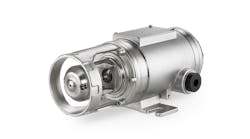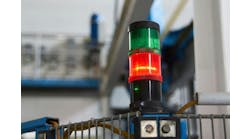Risk management offers an expanding menu of opportunities for ROI
A few years ago, my insurance man asked me, “You’re an engineer, aren’t you?” I was indeed, I said, and he went on to explain that I was eligible for a rate reduction, I just needed to fax him documentation of the degree I’d earned decades ago.
Back when I received my degree, his company was one of the few that would insure me. I had an assortment of traffic citations, owing to my then-youthful and aggressive approach to automobile travel. In contrast to the reduction he was now offering, my speeding tickets meant I was paying more—much more—because the statistics said I was part of a distinctly higher-risk group. I found the high cost annoying because I thought I was a pretty good driver compared to my fellow motorists who were always slowing me down. But if I wanted insurance, there was no arguing with his company’s statistics.
“We’re all insurance companies,” says Harvard Finance Professor Mihir Desai in a column for PBS, because we’re all finding our way through a risky and chaotic world. Our process plants are not exempt from the forces of chaos, so when the caller ID indicates the plant, we might worry that it brings news of an unexpected trip or an injury to an employee or contractor. It's no surprise that the investors in our facilities and the highly compensated managers who lead our corporations desire and acquire insurance for our risky operations.
“Chance and randomness are everywhere, but so are patterns,” surmises Desai. So periodically, the insurance company sends a crew of inspectors and auditors to assess the degree to which our operations might be at risk of an extended outage. Their liability for losses begins when an unplanned outage exceeds a specific time, so auditors look at everything from spare parts availability (what’s the lead time for your 5,000 hp synchronous motor?) to fire and explosion risks (what if a lube oil leak ignites and destroys the skid for a critical, unspared compressor?).
Since 2000, when safety integrity level (SIL) became the norm, insurance auditors have been asking about our safety interlock practices and procedures, and they’ve asked to see our testing records. It’s interesting that they don’t always request copies of everything; perhaps just having procedures and records vaults us into an acceptable risk category, like a good credit record might affect your home insurance.
The insurance men and women are now learning about alarm management, per Todd Stauffer, Exida’s product manager for that specialty. Might the underwriters consider having such a program in place as evidence a facility is a better risk? It’s arguable that having meaningful alarms and acceptable alarm rates translates to more reliable production, so how much longer can it be before vice presidents are asking plant managers about their alarm management program?
In the same vein, we are bombarded by news of the IIoT everywhere, and most of the media is proclaiming that a new era of enlightened manufacturing is dawning upon us. The expectation that we’ll somehow cleverly derive value from all the data flotsam and jetsam floating around our increasingly digital and connected plants is pervasive. The ISA 108 committee is quietly working on standards for “intelligent device management” – practices we’ve argued are a necessity for claiming the improved SIL rating of diagnostics-laden instruments, among other benefits. Certainly, if some clients achieve distinctive safety, productivity and reliability through such practices, the insurance people will begin seeking them out.
If you’re a staid driver (like me) and you aren’t getting a discount thanks to your engineering degree, you might want to mention it to your insurance agent. And when FM Global, for example, comes asking you about whether you actively monitor diagnostics from your intelligent devices, you’ll know the revolution has become mainstream. The time to become proficient is now, so we can at least show we have a plan for making the most of our increasingly capable and connected intelligent devices.




